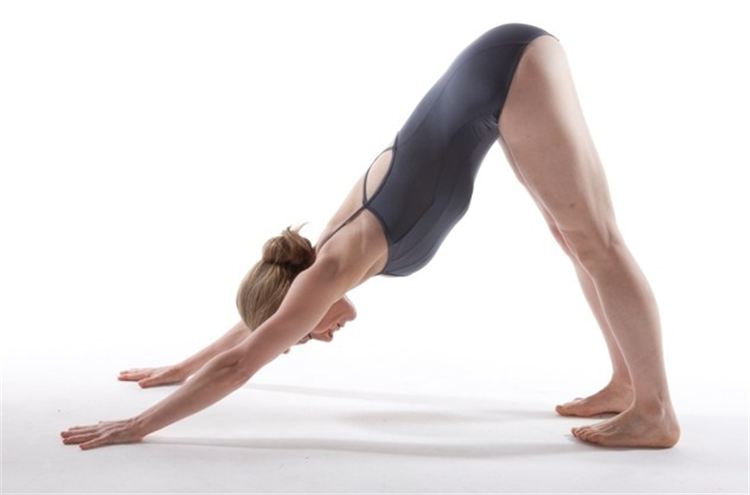Hot flashes and mood swings, are a significant menopausal health issues, but hearing loss is one significant health concern that should not be left ignored. While many women sail through “the change” relatively unscathed, some may face a decline in hearing with age. That’s because estrogen plays a role in your cochleas, the snail-shaped organs in your inner ears that convert vibrations into electrical signals your brain can process.This brutal and unforgiving auditory abnormality is called tinnitus.

Note that, hearing loss can cause your brain to work overtime to listen, which in turn amplifies the noise from tinnitus. We hear with the brain and not with the ears. Ears collect the sound and the brain interprets it. Regular Yoga practice enhances the circulation of blood throughout the body and reduces stress and strain. The regular practice of asanas stimulate the organs, removes toxins, and protects the body against infection and allergies as it improves immunity. Yoga helps relax the muscles around the head and neck, and this helps to reduce the noise caused by the condition.
| Tinnitus affects its sufferers on deep levels. It is often accompanied by chronic insomnia, migraines, depression, “brain fog,” fatigue, and even heart arrhythmias. It can potentially affect our daily performance, making us appear spaced out and incompetent at times. |
1. Trikonasana (lateral bending pose)
- Stand straight, feet apart and arms on the sides, palms facing and touching the thighs.
- While inhaling, raise your right arm slowly up to shoulder level, palm facing down with the elbow straight.
- Now turn the palm upwards and raise the hand so that it is in a straight line, touching the ear.
- While exhaling, bend as far as possible to the left. This is the final position of Trikonasana.
- Maintain it for a few seconds and return to normal position gradually.
- The same is to be done on the other side. This completes the process. The lateral stretch should be felt.
2. Padangusthasana
- Stand in Tadasana, hands on hips (feet together or hip width distance apart). Exhale and bend forward from the hip joints, not from the waist. As you descend draw the front torso out of the groins and open the space between the pubis and top sternum. As in all the forward bends, the emphasis is on lengthening the front torso as you move more fully into the position.
- If possible, with your knees straight, bend forward, wrap the index and middle fingers around the big toe, joining the thumb (“yogi grip”). With an inhalation straighten your arms and lift your front torso away from your thighs, making your back as concave as possible. Hold for a few breaths, then exhale and lengthen down and forward, bending your elbows out to the sides, using the biceps to assist going deeper into the pose. Keeping space between the shoulders and the ears, draw the shoulder blades down the back. Press the heels firmly into the floor and lift the sitting bones toward the ceiling. Turn the top thighs slightly inward.
- With each inhalation in the pose, lift and lengthen the front torso just slightly; with each exhalation release a little more fully into the forward bend. In this way the torso oscillates almost imperceptibly with the breath. Let your head hang from the root of the neck, which is deep in the upper back, between the shoulder blades. Stay in the position for 20 seconds.
- To come out of the pose, release the fingers, bring the hands to the hips and inhale, come up with a flat back.

3. Adho Mukha Svanasana (Downward Dog pose)
- Begin on your hands and knees. Your wrists should be underneath your shoulders, and your knees underneath your hips.
- Inhale as you tuck your toes under your heels. Then exhale to lift your hips, coming into an upside down “V” shape called Downward Facing Dog.
- Spread your fingers wide and create a straight line between your middle fingers and elbows. Work on straightening your legs and lowering your heels toward the ground. Your heels should be slightly wider than your toes, so the outside edges of your feet are parallel with the outside edges of your mat. Relax your head between your arms, and direct your gaze through your legs or up toward your belly button. Work on holding for five breaths.
4. Ustrasana
- Come up onto your knees. Take padding under your knees if they are sensitive.
- Draw your hands up the side of your body as you start to open your chest.
- Reach your hands back one at a time to grasp your heels.
- Bring your hips forward so that they are over your knees.
- Let your head come back, opening your throat.
5. Gomukhasana (Cow-Face pose)
- Slide your knees together in front of you, stacking the right knee directly on top of the left. If you find this movement to be difficult, try coming forward on your hands and knees before aligning the knees. When aligned, sit back in between your feet – which should be equidistant from your hips. Support your weight evenly amongst your sitting bones.
- For the upper body, extend your left arm up towards the sky. Then, bring your left hand down to the center of your back (hinging at the elbow). Reach your right arm out to the same side, parallel to the floor. Rotate the arm inward – your thumb will turn first towards the floor – until your palm faces the sky above.
- This movement should put your shoulder in correct position for the next one. Take a deep breath and, as you exhale, sweep your right arm behind and in the hollow of your lower back (as parallel to your spine as is comfortable).
- Keeping your spine long, hook fingers or hold hands behind your back. If they don’t reach, hold a belt or strap in both hands. Then, lift your left elbow toward the sky and draw your right elbow toward the ground. Keep your left arm close to your head. Center yourself.
- Lift your chest and firm your shoulders blades against your lower back for stability. As a beginner, breathe steady and deep 4-6 times while holding posture. Then, release your arms, uncross your legs, and repeat Gomukhasana with the left knee on top and left elbow pointing down.
6. Bhujangasana (Cobra Pose)
- Lie prone on the floor. Stretch your legs back, tops of the feet on the floor. Spread your hands on the floor under your shoulders. Hug the elbows back into your body. Press the tops of the feet and thighs and the pubis firmly into the floor.
- On an inhalation, begin to straighten the arms to lift the chest off the floor, going only to the height at which you can maintain a connection through your pubis to your legs. Press the tailbone toward the pubis and lift the pubis toward the navel. Narrow the hip points. Firm but don’t harden the buttocks. Firm the shoulder blades against the back, puffing the side ribs forward.
- Lift through the top of the sternum but avoid pushing the front ribs forward, which only hardens the lower back. Distribute the backbend evenly throughout the entire spine.
- Hold the pose anywhere from 15 to 30 seconds, breathing easily. Release back to the floor with an exhalation.

7. Matsyasana (Fish Pose)
- Lie flat on your back, either on a mat or on a carpeted floor. Keep your knees straight and keep your feet together with toes pointed to the ceiling.
- Slide your hands under your thighs and buttocks. This motion should cause your chest to bow upward slightly.
- Bend the elbows and push them into the floor; use the bend of the elbows and arms to raise the chest higher, keeping the chest arched upward.
- When the chest is arched as high as possible, drop your head and rest the very top of your head on the floor. Your chin should point to the ceiling.
- While in this posture, breathe deeply and really enjoy the chest expansion. Hold this position for as long as is comfortable.
8. Karna Pidasana (Ear Pressure Pose)
- Sit down on your knees on the floor.
- Take a blanket and fold it. Place it below your shoulders. Keep your head and neck away from the blanket.
- Lie down in a position like a supine.
- Push your legs above your head. Bend your legs to make the toes touch the floor behind your head. Keep the knees straight.
- Stretch out your arms to lock the fingers.
- Roll your shoulders and make your hips align with them.
- From this Plough Pose, bend your knees to rest on the floor beside your head. Rest your feet on the floor.
- Apply a slight pressure on your ears. Count till 5.
- Release your arms and then get back to the initial position.
- Repeat the steps 5 times daily.
9. Parvatasana (Seated Mountain Pose)
- Keep your spine erect and sit down in a cross legged position with your palms on your thighs.
- Breathe in and lift your hands up to form a Namaste pose. Look up to your finger tips.
- Sit comfortably and relax.
- Breathe out as you release your hands and put them on the floor.
- Bring out your legs one at a time.
10. Uttanpadasana (Leg Raise Pose)
- Rest on a mat in a supine position.
- Keep your feet together, and place your hands on your sides.
- Breathe deeply and relax.
- Breathe in and lift up your leg. Keep your knees erect as you make a 45 degree angle.
- Keep your abdomen tucked in.
- Count up to 15 as you breathe normally.
- Breathe out as you bring down your legs. Relax.
- Repeat this 5 times, and relax for 10 counts between each.

A recent study in the American Journal of Medicine found that women who got the most exercise had a 17% reduced risk of hearing loss. And other research, published this year in the American Journal of Clinical Nutrition, revealed that women who consumed the most beta-carotene (in carrots and other orange-colored produce) were 12% less likely to report hearing loss.
Bear in mind that one of the main triggers of tinnitus is stress and yoga is one of the best ways to deal with stress.
Disclaimer
The Content is not intended to be a substitute for professional medical advice, diagnosis, or treatment. Always seek the advice of your physician or other qualified health provider with any questions you may have regarding a medical condition.



